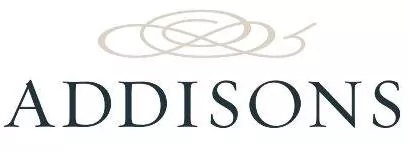ICANN recently conducted meetings with various stakeholder representatives with a view to completing discussions on the proposed Trademark Clearinghouse and its associated rights protection mechanisms. We discussed the Trademark Clearinghouse in detail in Part 3 of this discussion series ' Domain Name System Revolution Part 3: Update on the Introduction of the New gTLD Scheme to the Internet Domain Space'. Members of multiple GNSO (Generic Names Supporting Organisation) bodies took part in these meetings.
The group collaborated on a possible 'Strawman Solution' (that is, a first draft for criticism which the public can then comment on, the feedback of which will be used to develop a final model) which seeks to address a number of the elements in a set of recommendations (Recommendations) made by the Intellectual Property and Business Constituencies of the GNSO. The full list of recommendations is available here.
A public comment period on the proposal will be open until 21 December 2012.
The Strawman Solution
The Strawman Solution agreed upon by the stakeholder representatives proposes an expanded set of tools from which trademark holders can choose from in order protect themselves throughout the introduction and implementation of the new gTLDS. The Strawman Solution proposes the implementation of Sunrise and Trademark Claims services which are aimed at evening out and dealing with issues raised at the meetings. If adopted, the proposed services would impact various interested parties affect a variety of stakeholders including registries, registrars, trademark holders and domain name registrants.
The Strawman Solution includes the following important proposed elements:
- At least 30 days in advance of the sunrise period commencing all new gTLD operators will publish the dates and requirements of their sunrise period.
- Establishing a Trademark Claims period of 90 days (Claims 1), in which a person attempting to register a domain name matching a Clearinghouse record will be shown a Claims notice which will need to be acknowledged before registration. The rights holder will receive a notification if that domain is subsequently registered.
- Establishing a Trademarks Claims period of 6 to 12 months (Claims 2), where for an additional fee, rights owners can ensure that prospective domain registrants will be shown the Claims notice along with a description of the rights and responsibilities of the registrant and the registration process. Again, the rights holder will receive a notification if that domain is subsequently registered, however no acknowledgement is required from the prospective domain registrant.
- Rights holders will also have the option to add to a Clearinghouse record up to 50 'abusive variations'1 of that Clearinghouse record. Attempts to register these domain names would generate a Claims notices to the prospective registrant as well as the notices to the relevant rights holders, for both Claims 1 and 2.
Brand owners can review the Strawman Solution in full here.
Greater Protective Mechanisms for Second Level Registrations
An important aspect that was included in the list of Recommendations but not included in the Strawman Solution is what mechanisms should be provided for rights holders in relation to preventing (rather than just notifications of) second level registrations. This issue was discussed at length at the stakeholder meetings however it gained no support from non-intellectual property and business participants.
A proposed 'Limited Prevention Registration Mechanism' has however, been developed ICANN'S intellectual property and business constituencies and will be published by the for public comment in the near future.
The Limited Preventative Registration Mechanism would automatically prevent second level registration of their marks including exact matches, as well as character strings previously determined to have been abusively registered or used across all gTLD registries.
What Issues Are ICANN Still Grappling With?
Prior to the creation of the Strawman Solution, the ICANN meeting in Toronto highlighted a number of matters that remain to be determined, including:
- Whether agents be able to set up multiple accounts in the Trademark Clearing House, the logic here being so they do not have to provide complete access to a trademarks status page when later handing over a trademark registrations, which would disclose information about other rights holders the agent represents; and
- The final verdict on the costs involved with use of the Trademark Clearing House.
A review of the Strawman Solution does not provide any further
insight into these important questions.
Certainly, the Strawman Solution is a step in the right direction
in terms providing stakeholders with information about how the
Trademark Clearinghouse may operate, however it is clear that a
number of questions remain to be answered.
Conclusion
As suggested in Part 3 of this discussion series, brand owners should identify the gTLDs likely to be most relevant to their business operations and start making decisions now about which of their key trade marks they will register with the Clearinghouse and plan budgets accordingly.
Brand owners should consider voicing any concerns they may have here during the public comment period which (as noted above) will close on 21 December 2012.
These comments will be summarised and analysed, and revisions to the relevant procedures may be considered based on the feedback received in this public comment period and from the GNSO Council.
The assistance of Ashleigh Fehrenbach, Clerk, of Addisons in the preparation of this article is noted and greatly appreciated.
Footnotes
1 That is, domains that have previously been abusively registered or used as a result of a UDRP or court proceeding.
The content of this article is intended to provide a general guide to the subject matter. Specialist advice should be sought about your specific circumstances.

